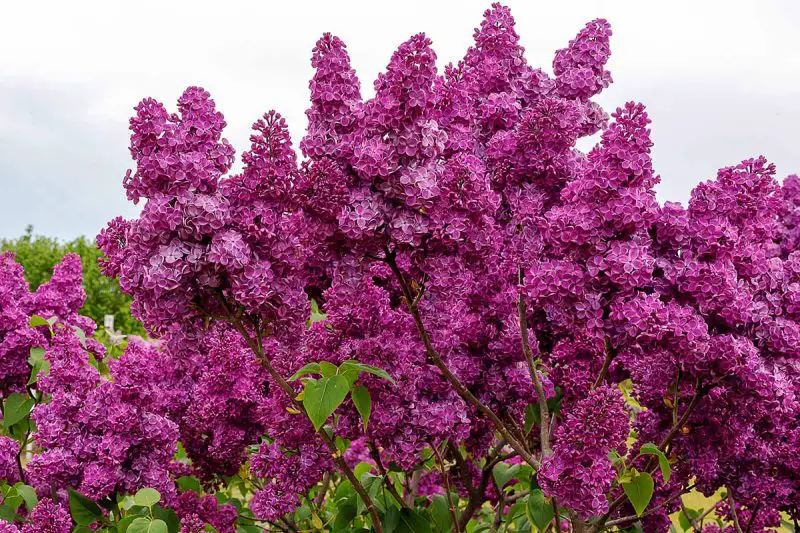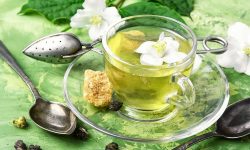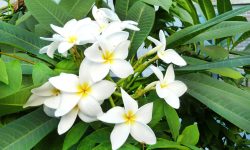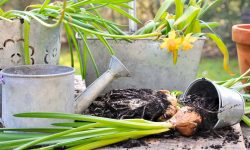There’s something undeniably magical about the first lilac blooms of the season. Their sweet fragrance drifts through the air, a sure sign that spring has fully arrived. For many gardeners, lilacs are more than just beautiful flowers—they’re living memories, passed down through generations, marking the turning of the seasons with their timeless charm.
But when exactly do lilacs bloom? The answer isn’t as simple as a date on the calendar. From chilly northern gardens to warmer southern landscapes, the bloom time of lilacs varies greatly by region, climate, and even cultivar. Knowing when to expect those soft, fragrant clusters can help you plan, prepare, and fully savor this fleeting spring spectacle.
Understanding the Lilac Blooming Season

General Blooming Timeline for Lilacs
Lilacs are often seen as the floral hallmark of spring, but their exact blooming timeline can shift depending on climate, variety, and local weather patterns. In general, most lilacs bloom between mid-April and early June, with the bulk of flowering occurring during May in many temperate regions. Their blooming season is brief yet intensely rewarding, typically lasting between two to four weeks.
Early-blooming lilac species, such as Syringa oblata, may begin flowering as soon as early to mid-April in warmer climates. These are often the first signs of the lilac season. The widely grown Syringa vulgaris, or common lilac, usually follows shortly after, blooming from mid to late May in most parts of the U.S. Later varieties, such as Syringa villosa and some hybrids, may extend the season into early June, especially in cooler or northern areas.
The start and duration of lilac bloom can also vary from year to year. A warm, early spring may push lilacs to flower sooner than expected, while a prolonged winter or late frost can delay blooming or damage the buds entirely. Despite these shifts, once the blooms emerge, they tend to follow a fairly consistent sequence each season: flower clusters open gradually, reach full display within a few days, and then fade after two to three weeks, depending on weather conditions and care.
Understanding this timeline allows gardeners to better anticipate their lilac display, plan companion plantings, and even extend the bloom period by selecting cultivars with staggered flowering schedules.
When Do Lilacs Bloom by USDA Hardiness Zones?
Lilacs bloom on their own schedule depending on how cold the winters are and how early spring arrives in your area. By understanding your USDA hardiness zone, you can more accurately predict when your lilacs will bloom and choose the best varieties for your climate. Here’s a breakdown of lilac bloom times by region.
Zone 3: Early to Mid-June
Zone 3 includes some of the coldest regions in the United States, such as northern Minnesota, parts of North Dakota, and interior Alaska. Winters here are long and harsh, and the ground may stay frozen well into spring. As a result, lilacs bloom much later than in other areas—typically from early to mid-June. Cold-hardy species like Syringa vulgaris and Syringa x prestoniae perform best here, often producing dense blooms once the threat of frost has passed.
Zone 4: Late May to Early June
In Zone 4, which spans areas like central Minnesota, parts of Montana, northern New York, and the upper Midwest, lilacs generally bloom from late May to early June. These areas experience a solid winter chill, perfect for bud development, followed by a gradual warming in spring that triggers flowering. Common lilacs thrive in these conditions and tend to bloom consistently year after year.
Zone 5: Mid to Late May
This zone includes regions such as Chicago, Denver, Pittsburgh, and many parts of New England. In Zone 5, lilacs typically bloom from mid to late May, depending on how quickly temperatures rise in spring. Many varieties, including classic French hybrids and heirloom cultivars, flourish in this zone. With relatively stable winters and cool springs, Zone 5 offers one of the most predictable bloom times for lilacs.
Zone 6: Early to Mid-May
Zone 6 includes cities like St. Louis, Philadelphia, and parts of the Pacific Northwest. Here, lilacs usually bloom early to mid-May. Spring tends to arrive a bit earlier, so flower buds mature faster and open sooner than in colder zones. Both early and mid-season blooming lilac varieties can be grown here, allowing for a longer lilac display if multiple cultivars are planted.
Zone 7: Mid to Late April
In warmer regions such as central Virginia, parts of North Carolina, and northern Texas, lilacs begin blooming in mid to late April. Spring temperatures rise quickly in this zone, pushing lilacs into early bloom. However, not all traditional lilac varieties thrive in the warmth of Zone 7. Heat-tolerant cultivars like Syringa patula ‘Miss Kim’ and Bloomerang® are recommended, as they bloom well and tolerate the shorter winter chill.
Zone 8: Early to Mid-April
Zone 8 includes areas like the Pacific Northwest, parts of northern California, and the Deep South. In these regions, lilacs may bloom as early as early to mid-April. Due to the mild winters, gardeners must choose lilac varieties with lower chill requirements. Reblooming and early-season lilacs are better suited here, as standard types may struggle to set buds in such warm conditions.
Zone 9: March or No Bloom
In hot regions like southern Florida, southern Texas, and much of coastal California, traditional lilacs often fail to bloom due to insufficient winter chill. In Zone 9, if lilacs bloom at all, it may happen as early as late February to March—but only with specially bred, low-chill varieties such as Blue Skies, Lavender Lady, or Descanso hybrids. Even then, bloom quality can be inconsistent without proper care and a sufficiently cool winter.
Zone 10 and Above: Rare or No Bloom
In tropical and subtropical zones such as southern Florida, Hawaii, or coastal southern California, lilacs are unlikely to bloom at all. These areas simply don’t get cold enough in winter for flower buds to develop. Gardeners in these zones typically turn to alternative shrubs with similar fragrance or appearance, as lilacs are not reliable performers in these climates.
Factors That Influence Lilac Bloom Time
The timing of lilac blooms is not solely determined by the calendar or your climate zone. Several key factors—both environmental and horticultural—can influence when your lilacs begin to flower. Understanding these variables can help you anticipate bloom times more accurately and improve the overall performance of your plants.
Variety and Species Selection
Different lilac species and cultivars bloom at different times in spring. For example, Syringa oblata, an early-blooming species, often opens its flowers a week or two earlier than the classic Syringa vulgaris. Meanwhile, Syringa villosa and Syringa reflexa are known to bloom later in the season. Some modern hybrids, like the Bloomerang series, are reblooming types that flower in spring and again in late summer or fall. Choosing a mix of early, midseason, and late bloomers can not only extend your lilac season but also shift bloom timing depending on the combination planted.
Plant Age and Maturity
Lilacs generally don’t bloom during their first few years after planting. Most require three to five years to reach maturity and begin flowering reliably. During this establishment phase, the plant prioritizes root development and vegetative growth over reproductive effort. Younger plants may have smaller, fewer, or even no blooms in their initial seasons, even under ideal conditions.
Chill Hours and Winter Temperatures
Lilacs are cold-climate shrubs that require a significant number of chill hours (exposure to temperatures between 32°F and 45°F or 0°C and 7°C) in order to form flower buds. If the winter is too mild, especially in warmer zones, the plant may not receive enough dormancy time to trigger blooming. On the other hand, if spring warms too quickly after dormancy, early bud development can be disrupted or blooms may appear earlier than expected.
Spring Weather Patterns
Fluctuating spring temperatures can either delay or accelerate lilac blooming. A slow, steady warming trend is ideal, encouraging consistent bud development and flowering. However, late frosts or sudden cold snaps can damage developing buds, delaying or even preventing bloom. Conversely, an unusually warm early spring can force lilacs into premature bloom, shortening the display or making flowers more vulnerable to weather damage.
Sunlight Exposure
Lilacs are sun-loving plants that require at least six hours of direct sunlight per day to produce abundant flowers. When grown in partial shade or areas with inconsistent sunlight, lilacs may bloom later or produce fewer flower clusters. Poor sun exposure can also lead to stretched, leggy growth and reduced vitality over time.
Pruning Timing and Technique
Pruning has a direct impact on lilac bloom time and quality. Lilacs form their flower buds in late spring or early summer on the current year’s growth, which will bloom the following spring. If you prune too late in the season—especially in fall or winter—you risk cutting off the developing flower buds, resulting in few or no blooms the next year. The ideal time to prune is immediately after flowering, giving the plant time to regrow and set buds for the following season.
Soil Quality and Nutrition
While lilacs are not overly demanding, poor soil conditions and nutrient imbalances can impact their bloom cycle. Excess nitrogen in particular encourages lush foliage growth at the expense of flower production. For the best results, lilacs prefer well-draining, slightly alkaline soil with a balanced fertilizer applied in early spring. Lack of key nutrients like phosphorus can also delay or reduce blooming.
Watering Practices
Both overwatering and underwatering can affect lilac bloom time. Excess moisture, especially in early spring, can cause root rot or delay plant development. On the other hand, dry conditions during bud formation in summer or during the early growth stages in spring can stress the plant, reducing flower quantity and delaying bloom. Consistent, moderate watering is key—especially in the first few years after planting.
Tips to Extend the Lilac Blooming Season
Although lilacs are famously short-blooming, there are practical strategies gardeners can use to enjoy their flowers for longer. By selecting the right varieties, optimizing growing conditions, and using simple maintenance techniques, you can stretch the lilac season from just a few weeks to well over a month—or even enjoy a second bloom later in the year.
Choose Varieties with Staggered Bloom Times
One of the most effective ways to extend the lilac season is by planting a mix of cultivars that bloom at different times. Early-blooming types like Syringa oblata open as early as April, while midseason favorites such as Syringa vulgaris peak in May. Later varieties like Syringa villosa or Miss Canada may bloom into early June. When carefully combined in a single garden, these can provide a continuous show of color for up to six weeks.
Incorporate Reblooming Lilacs
Reblooming cultivars such as the Bloomerang® series are specially bred to flower twice in a single season—first in spring and again in late summer to early fall. While the second flush is usually lighter than the first, it adds valuable color and fragrance when most other lilacs are dormant. To encourage reblooming, provide consistent water, deadhead spent blooms, and apply a light fertilizer after the first flowering.
Maximize Sunlight Exposure
Lilacs need full sun to bloom their best. Ensure your plants receive at least six hours of direct sunlight each day. Shrubs grown in shade or near taller trees may bloom later and more sparsely. Pruning back encroaching vegetation or relocating the lilac to a sunnier spot can make a significant difference in bloom quality and duration.
Improve Soil and Drainage
Healthy roots produce stronger blooms. Amend heavy clay soil with compost or sand to improve drainage and prevent root rot. Lilacs prefer slightly alkaline to neutral soil. If your soil is too acidic, adding lime can help create a more favorable environment for flower production.
Water Deeply During Bud Formation
Lilacs set their flower buds for the next season during the summer after spring flowering. Providing regular, deep watering during this period—especially during dry spells—ensures that buds develop fully and on time. Avoid overhead watering to prevent mildew and opt for slow, ground-level soaking.
Deadhead Spent Flowers Promptly
Removing faded flowers prevents the plant from putting energy into seed production and instead redirects it toward future growth and bud development. While deadheading won’t prolong the current bloom period, it supports stronger blooming in the following season and can stimulate rebloomers to produce a second flush.
Avoid Overfertilizing with Nitrogen
While fertilizing can support healthy growth, too much nitrogen—often found in lawn fertilizers—can cause lush foliage at the expense of flowers. For lilacs, choose a balanced fertilizer (such as 5-10-10) in early spring and avoid feeding late in the season, which may delay dormancy and interfere with next year’s bloom cycle.
Plant in Airy, Open Locations
Good airflow around your lilacs reduces the risk of mildew and fungal diseases that can weaken the plant and shorten the bloom window. Avoid crowding lilacs with dense shrubs or walls. An open, well-ventilated spot with room to grow encourages both longer-lasting flowers and overall plant health.
Mulch to Retain Soil Moisture
Applying a 2–3 inch layer of organic mulch around the base of your lilacs helps retain moisture, regulate soil temperature, and reduce weed competition. This is especially helpful during hot spring days or dry summers when water stress can shorten bloom time. Keep mulch a few inches away from the trunk to prevent rot.
Prune Properly at the Right Time
Timely pruning helps maintain a compact, healthy shrub and prevents the plant from becoming leggy. Always prune right after flowering, not in late summer or fall, to preserve the next year’s flower buds. Light shaping and removal of dead wood also encourage more vigorous blooming the following season.
When to Expect Reblooming Lilacs
Encouraging Healthy Blooms Year After Year
Lilacs are long-lived shrubs, and with the right care, they can produce beautiful, fragrant blooms for decades. However, consistent blooming year after year doesn’t happen by chance—it requires attention to timing, maintenance, and growing conditions. Here’s how to ensure your lilacs thrive and bloom reliably each season.
Maintain Consistent Sunlight
Lilacs are sun lovers. To bloom profusely, they need at least 6 hours of full sun daily. If your lilac is growing in partial shade, especially under large trees or near buildings, consider trimming surrounding plants or relocating it to a sunnier spot. Even mature lilacs can improve their bloom quality with increased sunlight.
Prune Immediately After Bloom
Pruning is critical for continuous blooming. Lilacs set their flower buds for the following year during the summer months, shortly after the spring bloom ends. If you prune too late—especially in fall or winter—you risk cutting off those buds. The best time to prune is right after flowering, removing spent blooms and lightly shaping the shrub. This encourages strong growth and abundant bud formation.
Water During Bud Development
Though lilacs are drought-tolerant once established, they benefit from deep watering during late spring and summer, when next year’s flower buds are forming. Insufficient moisture during this time can lead to weak or missing blooms the following season. Focus on consistent moisture at the root zone, especially during hot or dry spells.
Feed with the Right Nutrients
Lilacs don’t need heavy fertilizing, but poor nutrition can reduce bloom quantity and quality. Apply a balanced or low-nitrogen fertilizer (such as 5-10-10) in early spring, just as new growth appears. Avoid high-nitrogen fertilizers, which encourage leafy growth over flowers. In alkaline or nutrient-poor soils, a light application of compost or bone meal in fall can also improve bloom strength.
Improve Soil and Drainage
Lilacs prefer well-draining, slightly alkaline soil. If your soil is heavy clay or too acidic, amend it with organic matter and lime as needed. Poor drainage can cause root rot, which weakens the plant and reduces flowering. Proper soil health directly supports root vigor and bud development.
Control Pests and Diseases Early
Common issues like powdery mildew, scale insects, and bacterial blight can sap a lilac’s energy and reduce flower production. Keep an eye on leaf health throughout the season and treat issues early with appropriate organic or chemical solutions. Healthy foliage supports better energy storage for next year’s bloom cycle.
Allow Time to Mature
If your lilac is young, be patient. Most lilacs take 3 to 5 years to reach full blooming maturity. During this time, focus on providing excellent care rather than expecting full flower production. Once established, the shrub will reward your efforts with increasingly vibrant and consistent blooms.
With mindful, seasonal care, your lilacs can become a reliable spring showstopper—year after year.
Frequently Asked Questions About Maintaining Yearly Lilac Blooms
I’ve had my lilac for a few years, but it still won’t bloom. Why?
If your lilac has been in the ground for over three years and still doesn’t flower, the most likely reasons are lack of sunlight, incorrect pruning, or improper fertilization. Lilacs need at least six hours of direct sunlight daily to bloom well. Pruning too late in the season—like in fall or early spring—often removes developing buds meant for the following year.
When is the best time to prune a lilac so it keeps blooming every year?
The ideal time to prune is right after the flowers fade in late spring. This is before the plant starts setting buds for next season. Trim off the spent flower heads and lightly shape the shrub. Avoid pruning in fall or winter, as this will likely remove next year’s flower buds and reduce blooming.
My lilac is growing near a fence and only produces a few flowers. How can I fix that?
Your lilac is probably not getting enough light. Lilacs growing in shady spots or near walls and fences tend to bloom poorly. If possible, move the plant to a sunnier area, or thin out nearby trees or shrubs to let more sunlight reach the lilac. Even mature plants can improve bloom production with better light exposure.
What kind of fertilizer should I use to get more lilac blooms?
Use a low-nitrogen, higher-phosphorus fertilizer, such as 5-10-10, and apply it in early spring as new growth appears. Avoid lawn fertilizers or anything with high nitrogen, which promotes leafy growth at the expense of flowers. If your soil is too acidic, add lime or wood ash to make it slightly alkaline, which lilacs prefer.
When will a newly planted lilac start blooming?
Most lilacs begin to bloom three to five years after planting. In the first few years, the plant focuses on developing a strong root system. If your lilac looks healthy but hasn’t bloomed yet, don’t worry—just keep giving it proper sunlight, water, soil care, and timely pruning. The blooms will come with maturity.
Final Thoughts on When Lilacs Bloom by Region
Lilac blooming is a cherished seasonal event that varies based on where you live, what variety you grow, and how you care for your plants. Whether you’re in the chilly North or the mild South, choosing the right lilac and understanding your regional conditions will help you enjoy lush, fragrant blooms year after year. With proper care and a little planning, you can make lilacs a highlight of your spring garden and even extend their beauty into summer.






